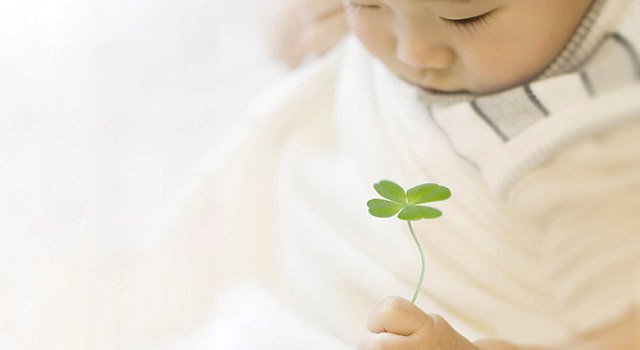The Egg Donation Process
The egg donation process works in 7 steps:
- Indications
- Selecting an Egg Donor
- Matching the Egg Donor with the Recipient
- Egg Donor Recruitment
- Evaluating Prospective Egg Donor Candidates
- Preparation for the Egg Donor IVF Process
- The Cycle of Treatment
Indications
- Advancing age (beyond 40 years) is by far the most common reason why American women elect to work with an egg donor.
- The second most common indication for OD – and one that usually ties in with advancing age beyond 40 years – is declining ovarian function.
- In a select, but nevertheless, significant percentage of cases, the indication for OD falls into one of the following categories:
- Premature ovarian failure in women under 40 years due to genetic cause
- Exposure to chemotherapy and/or excessive radiation as part of cancer therapy
- Aneuploidy (e.g. ovarian dysgenesis or Turner’s syndrome)
- Surgical removal of the ovaries (oophorectomy)
- Recurrent IVF failure due to “poor quality” eggs or embryos is relatively common and one of the most rapidly growing indications for OD in the United States.
- Another social reason for American women electing to undergo OD is in cases of same-sex relationships (predominantly female) where both partners wish to share in the parenting experience by having one serve as egg provider and the other as the recipient.
Selecting an Egg Donor
Ninety percent of egg donation in the United States is accomplished by soliciting the services of anonymous donors. There are typically state-licensed agencies used to handle the legal and financial aspects of such arrangements. It is less common for recipients to solicit donors that are known to them. However, this too can be accomplished ethically through the services of an OD agency. It is also not easy to find donors who are willing to enter into such an open arrangement. Accordingly, in the vast majority of cases where the services of a known donor are solicited, it is often done by virtue of a private arrangement. While the services of non-family-member, known donors are sometimes sought, it is much more common for recipients to approach close family members in an attempt to retain as much of the family gene pool as possible. Many recipients feel the compulsion to know or at least to have met the egg donor so as to gain first-hand familiarity with their physical characteristics, intellect, and character. It is of interest that in the United States, the decision to use a known donor is rarely based solely on the desire to reduce or eliminate the donor fee.
In America, embryo recipients who use known donors, while often sharing similar demographic characteristics with them, tend to differ significantly when it comes to issues of disclosure. Recipients using anonymous donors tend to be far more open about the issue of their undergoing egg donation and are more willing to tell others as well as inform the child about the nature of his or her conception.
At the Center for Reproductive Endocrinology, we can advise patients on the process, however, we do not facilitate selection – the process will go through an external agency.
A few of the outside agencies we work with are:
The World Egg Bank
Tel: 877-331-2427
Fairfax Egg Bank
Tel: 888-352-5577
California Cryo Egg Bank (Donor Egg Bank USA)
Tel: 855-344-2265
My Egg Bank
Tel: 866-537-8642
Cryos International
Tel: 407-203-1175
Matching the Egg Donor with the Recipient
Egg donor agencies usually prepare rather extensive donor profiles. Some, aside from offering direct personal and telephone-based access to both donors and recipients, also offer copious information and online services via a dedicated website. Through such a website, a recipient and her partner can for a nominal fee, select or narrow down their selection of the most suitable egg donor in the privacy of their home…a growing number of candidates take full advantage of this service.
Once the choice of a donor has been narrowed down, to two or three, the recipient(s) is/are asked to forward all relevant medical records to their chosen ART physician. Upon receipt of such information, an in-person or telephone-based detailed, medical consultation will subsequently be held. Thereupon a physical examination by the treating physician or by a designated alternative qualified counterpart is scheduled. This entire process is overseen, and orchestrated by one of the OD program’s nurse coordinators. As a result, all clinical, financial and logistical issues can be managed effectively.
Egg Donor Recruitment
Donor agencies usually limit the age of egg donors to under 35 years in an attempt to minimize the risk of ovarian resistance and negate the adverse influence of the “biological clock” (donor age) on egg quality. In fact, some OD agencies go so far as to set their age limits below 30 years.
Another factor involved in selecting an egg donor is the need to accurately assess ovarian reserve. We use various tests to assess ovarian reserve in order to optimally screen the most fertile egg donors. For instance, we recently reported on an excellent correlation between such a pre-antral/antral follicle count and the number of mature eggs subsequently retrieved from the donor following ovarian stimulation with an appropriate dosage of gonadotropins. A total pre-antral/antral count of less than ten (10) will often lead to the recommendation that the woman be disqualified from serving as an egg donor.
No single factor instills more confidence regarding the reproductive potential of a prospective egg donor than a history of her previously having achieved a pregnancy on her own, or of one or more recipients of embryos derived from her eggs having achieved a live birth. Moreover, such a track record makes it far more likely that such an OD will have “good quality eggs.” Furthermore, the fact that an OD readily conceived on her own lessens the likelihood that she herself has tubal or organic infertility. It should therefore come as no surprise that it provides a measurable degree of comfort to OD programs when a prospective donor is able to provide evidence of having experienced a relatively recent, trouble-free, spontaneous pregnancy. However, the current shortage in the supply of egg donors makes it both impractical and unfeasible to confine donor recruitment to those women who could fulfill such stringent criteria for qualification.
Evaluating Prospective Egg Donor Candidates
1. Donor History
Appropriate and careful history taking is essential in order to identify any personal or family history that might point towards potential medical problems that might arise during or after the cycle of stimulation and egg retrieval. Systemic disease, allergies to known medications, hemorrhagic diatheses, and mental disease are but a few significant examples. It is also extremely important to try and rule out potentially debilitating hereditary and chromosomal disorders that could affect the quality of any offspring arising out of the egg donation.
Most programs in the United States follow the American Society of Reproductive Medicine’s (ASRM) recommendations and guidelines for selective genetic screening of prospective egg donors for conditions such as sickle cell trait or disease, thalassemia, cystic fibrosis, and Tay Sachs disease when medically indicated. Consultation with a geneticist is available in about 90% of programs. There are, however, still a significant number of OD ART-programs in the United States that do not follow all ASRM guidelines.
Most American recipient couples place a great deal of importance on emotional, physical, ethnic, cultural, and religious compatibility with their chosen egg donor. In fact, they will often insist that the egg donor’s sexual orientation be heterosexual.
2. Psychological Screening
Americans tend to place great emphasis on the psychological screening of egg donors. Since most donors are “anonymous”, it is incumbent upon the OD agency or ART program to determine the donor’s degree of commitment as well as her motivation for deciding to provide this service. We have on occasions encountered donors who have buckled under the stress and defaulted mid-stream during their cycle of stimulation with gonadotropins. In one case, a donor knowingly stopped administering gonadotropins without informing anyone. She simply awaited cancellation, which was affected when follicles stopped growing and her plasma E2 concentration failed to rise.
Such concerns mandate that assessment of donor motivation and commitment be given appropriate priority. Most recipients in this country tend to be very much influenced by the “character” of the prospective egg donor, believing that a flawed character is likely to be carried over genetically to the offspring. In reality, unlike certain psychoses such as schizophrenia or bipolar disorders, character flaws are usually neuroses and are most likely determined by environmental factors associated with upbringing. As a result, they are unlikely to be genetically transmitted. Nevertheless, all donors should be subjected to counseling and screening and should be selectively tested by a qualified psychologist. When in doubt they should be referred to a psychiatrist for a definitive diagnosis. Selective use of tests such as the MMPI, Meyers-Briggs, and NEO-Personality Indicator is used to help screen for personality disorders. Significant abnormalities, once detected, should lead to the automatic disqualification of such prospective donors.
When it comes to choosing a known donor, it is equally important to make sure that she was not coerced into participating. We try to caution recipients who are considering having a close friend or family member serve as their designated egg donor that in doing so, the potential always exists that the donor might become a permanent and unwanted participant in the lives of their new family.
3. Assessing for Substance Abuse
We typically use urine and/or serum drug testing of egg donors. This is to minimize the risk to our recipients of an undiagnosed but significant risk factor.
4. Assessing the Donor’s Ovarian Responsiveness
Assessing an individual’s follicle recruitment potential is accomplished by measuring FSH and E2 on the 3rd day of a spontaneous menstrual cycle. In addition to these tests, we also measure the woman’s serum Inhibin-B levels. An FSH of less than 8.0 mIU/ml in association with a plasma estradiol concentration between 20 and 60 pg/ml and an Inhibin-B level above 45 ng/ml on CD3 usually points to the woman being a potentially good responder to gonadotropin stimulation. However, recipients must be made aware of the possibility of a suboptimal ovarian response in spite of these tests all being within normal limits. Other measurable hormonal parameters include Thyroid Stimulating Hormone (TSH), free T4 and prolactin, which if present in a high concentration, can competitively bind with granulosa cell FSH receptors, reducing ovarian response to gonadotropins.
5. Testing for Sexually Transmittable Diseases
FDA guidelines require that all egg donors be tested for sexually transmittable diseases before entering into a cycle of IVF. It is highly improbable that DNA and RNA viruses are vertically transmitted to an egg or an embryo through sexual intercourse or IVF. Nevertheless, the albeit remote possibility of transmission and the associated legal ramifications demand that potential donors so infected be disqualified from participating in IVF with egg donation. For example, it is easily conceivable that the egg donation process could be blamed for an unrelated occurrence of disease states such as hepatitis b, c or HIV. In addition, evidence of prior or existing infection with Chlamydia or gonorrhea introduces the possibility that the egg donor so affected might have pelvic adhesions or even irreparably damaged fallopian tubes that might have rendered her infertile. Even if an egg donor or recipient who carries a sexually transmittable viral or bacterial agent is willing to waive all rights of legal recourse, a potential risk still exists that a subsequently affected offspring might in later life sue for wrongful birth.
6. Medical Evaluation
While advancing age beyond 40 years is indeed associated with an escalating incidence of pregnancy complications, such risks are largely predicable through careful medical assessment prior to pregnancy. The fundamental goal is to determine that the recipient is capable of safely carrying a pregnancy that would culminate in the safe birth of a healthy baby. For this reason, a thorough evaluation must be done prior to initiating IVF in all cases.
7. Infectious Screening
The need for careful infectious screening for embryo recipients cannot be overemphasized. Aside from tests for debilitating and life-threatening sexually transmittable diseases, there is the important requirement that cervical mucus and semen be free of infection with ureaplasmaurealyticum. This organism, which rarely causes symptoms, frequents the cervical glands of 15-20% of women in the United States. The introduction of an embryo transfer catheter via an infected cervix might easily transmit the organism into an otherwise sterile uterine cavity. Ureaplasma and Mycoplasma induce apoptosis of trophoblast cells, leading to early implantation failure and/or first-trimester miscarriage.
8. Preparation for the Egg Donor IVF Process
Preparation for egg donation begins with full disclosure to all participants as to what each step of the process involves from start to finish, as well as potential medical and psychological risks. This requires that a significant amount of time be devoted to this task and that there be a willingness to painstakingly address all questions and concerns posed by all parties involved in the process. An important component of full disclosure involves clear interpretation of the medical and psychological components assessed during the evaluation process. All parties should be advised to seek independent legal counsel so as to avoid conflict of interest that might arise from legal advice given by the same attorney. Appropriate consent forms are then reviewed and signed independently by the donor and the recipient couple.
Most embryo recipients fully expect their chosen donor to yield a large number of mature, good quality eggs, sufficient to provide enough embryos to afford a good chance of pregnancy, as well as several for cryopreservation (freezing) and storage. While such expectations are often met, this is not always the case. Accordingly, to minimize the trauma of unexpected disappointment, it is essential that in the process of counseling and of consummating agreements, the respective parties be fully informed that there are no specific guarantees of outcome. By making best efforts to provide the highest standards of care, the caregivers can only assure optimal intent and performance in keeping with accepted standards of care. All parties should be made aware that no definitive representation can or will be made as to the number or quality of ova and embryos that will or are likely to become available.
FAQ's
-
1
How does IVF with donor eggs work?
There are many types of egg donations. One may use a known person, like a friend or family member to undergo IVF on her behalf. The donor’s eggs are fertilized with the partner’s sperm and the embryo transferred to the intended mother. A couple interested in more privacy may choose an anonymous egg donor through an agency. Others may prefer the cost saving appeal of purchasing frozen eggs from an egg bank. The donors are anonymous (sometimes with pictures provided) but are tested extensively for genetic and infectious diseases.
-
2
Will the donor egg have my DNA?
The egg donor will not have the intended mother’s DNA. The embryo would have the intended father’s and the egg donor’s DNA.
-
3
Is a donor egg biologically yours?
A donated egg is your legal property. Any child that results from the use of this egg is legally yours, no matter who delivered the child (e.g., Gestational Surrogate). Biologically, the source of all DNA inside that egg originated from the donor’s egg.
-
4
How successful is IVF with donor eggs?
Typically, only 1 in 3 eggs are chromosomally normal in a woman less than 30 years old. The transfer of a normal looking day 5 embryo in a good uterine lining results in close to 60% live birth rate.
-
5
Is an egg donor the biological mother?
The egg donor is the genetic “mother,” but we differentiate between the terms “biological” and “mother”. We recognize that the term “mother” transcends the concept of “biological” source of the child’s DNA and who carried the baby.
-
6
What happens when you use a donor egg?
Once pregnant with a fetal heart beat, the couple is discharged to their OB-GYN for routine prenatal care. The decision to inform the child later is a personal one. Some parents are open about it while others favor privacy (e.g., by choosing an egg donor with similar blood types). It is important to recognize, however, that genetic testing is readily available through direct-to-consumer testing (e.g. 23andme), so it should be expected that your future child’s genetic heritage could easily be uncovered in the course of that child’s life.










